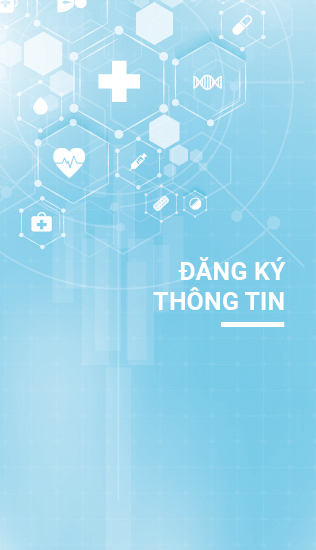Thang điểm nguy cơ xuất huyết đường tiêu hóa trên: Ai, khi nào và tại sao?
Thang điểm nguy cơ xuất huyết đường tiêu hóa trên: Ai, khi nào và tại sao?
Xuất huyết đường tiêu hóa trên (Upper gastrointestinal bleeding – UGIB) vẫn là một nguyên nhân quan trọng dẫn đến nhập viện. Để phân tầng bệnh nhân theo nguy cơ của các biến chứng, chẳng hạn như xuất huyết hoặc tử vong, và để dự đoán nhu cầu can thiệp lâm sàng, một số điểm nguy cơ đã được đề xuất và việc sử dụng chúng được khuyến cáo thống nhất theo các hướng dẫn quốc tế.
Nhóm tác giả: Sara Monteiro, Tiago Cúrdia Gonçalves, Joana Magalhães, and José Cotter
Nơi công tác: Khoa tiêu hóa, Bệnh viện Senhora da Oliveira-Guimarães, Creixomil, 4835-044 Guimarães, Bồ Đào Nha
Được đăng tải tạp chí: World J Gastrointest Pathophysiol.
Xuất bản online: 15/2/2016
TỔNG QUAN
Xuất huyết đường tiêu hóa trên (Upper gastrointestinal bleeding – UGIB) vẫn là một nguyên nhân quan trọng dẫn đến nhập viện. Để phân tầng bệnh nhân theo nguy cơ của các biến chứng, chẳng hạn như xuất huyết hoặc tử vong, và để dự đoán nhu cầu can thiệp lâm sàng, một số điểm nguy cơ đã được đề xuất và việc sử dụng chúng được khuyến cáo thống nhất theo các hướng dẫn quốc tế. Việc sử dụng hệ thống chấm điểm nguy cơ trong đánh giá sớm bệnh nhân UGIB có thể hữu ích để phân biệt những bệnh nhân có nguy cơ cao, những người có thể cần can thiệp lâm sàng và nhập viện, những bệnh nhân có nguy cơ thấp với khả năng tiến triển biến chứng thấp hơn, trong đó quản lý bệnh nhân ngoại trú có thể được cân nhắc. Mặc dù một số thang điểm đã được công bố và xác nhận để dự đoán các kết quả khác nhau, những điểm thường được sử dụng nhất là điểm Rockall và điểm Glasgow Blatchford (GBS). Trong khi điểm Rockall, kết hợp các biến số lâm sàng và nội soi, đã được xác nhận để dự đoán tỷ lệ tử vong, thì GBS, dựa trên các thông số lâm sàng và xét nghiệm, đã được nghiên cứu để dự đoán sự cần thiết can thiệp lâm sàng. Mặc cho những ưu điểm đã được báo cáo trước đây, việc sử dụng các thang điểm trong các quyết định lâm sàng vẫn còn hạn chế. Bài đánh giá này mô tả các thang điểm nguy cơ khác nhau được sử dụng trong theo dõi UGIB, nêu bật nghiên cứu quan trọng nhất, giải thích tại sao và khi nào việc sử dụng chúng có thể hữu ích, phản ánh các vấn đề vẫn chưa được giải quyết và hướng dẫn nghiên cứu trong tương lai với yếu tố lâm sàng.
Từ khóa: Xuất huyết đường tiêu hóa trên, Thang điểm nguy cơ, Đánh giá nguy cơ, Điểm Rockall, Điểm Glasgow blatchford
PMCID: PMC4753192
PMID: 26909231
doi: 10.4291/wjgp.v7.i1.86
Để đọc chi tiết nghiên cứu này, vui lòng truy cập (https://www.ncbi.nlm.nih.gov/pmc/articles/PMC4753192/)
Được trích dẫn:
- Longstreth GF. Epidemiology of hospitalization for acute upper gastrointestinal hemorrhage: a population-based study. Am J Gastroenterol. 1995;90:206–210. [PubMed] [Google Scholar]
- Lanas A, García-Rodríguez LA, Polo-Tomás M, Ponce M, Alonso-Abreu I, Perez-Aisa MA, Perez-Gisbert J, Bujanda L, Castro M, Muñoz M, et al. Time trends and impact of upper and lower gastrointestinal bleeding and perforation in clinical practice. Am J Gastroenterol. 2009;104:1633–1641. [PubMed] [Google Scholar]
- Sung JJ, Tsoi KK, Ma TK, Yung MY, Lau JY, Chiu PW. Causes of mortality in patients with peptic ulcer bleeding: a prospective cohort study of 10,428 cases. Am J Gastroenterol. 2010;105:84–89. [PubMed] [Google Scholar]
- Chiu PW, Ng EK. Predicting poor outcome from acute upper gastrointestinal hemorrhage. Gastroenterol Clin North Am. 2009;38:215–230. [PubMed] [Google Scholar]
- Klebl F, Bregenzer N, Schöfer L, Tamme W, Langgartner J, Schölmerich J, Messmann H. Risk factors for mortality in severe upper gastrointestinal bleeding. Int J Colorectal Dis. 2005;20:49–56. [PubMed] [Google Scholar]
- Zimmerman J, Siguencia J, Tsvang E, Beeri R, Arnon R. Predictors of mortality in patients admitted to hospital for acute upper gastrointestinal hemorrhage. Scand J Gastroenterol. 1995;30:327–331. [PubMed] [Google Scholar]
- Imperiale TF, Dominitz JA, Provenzale DT, Boes LP, Rose CM, Bowers JC, Musick BS, Azzouz F, Perkins SM. Predicting poor outcome from acute upper gastrointestinal hemorrhage. Arch Intern Med. 2007;167:1291–1296. [PubMed] [Google Scholar]
- Nahon S, Hagège H, Latrive JP, Rosa I, Nalet B, Bour B, Faroux R, Gower P, Arpurt JP, Denis J, et al. Epidemiological and prognostic factors involved in upper gastrointestinal bleeding: results of a French prospective multicenter study. Endoscopy. 2012;44:998–1008. [PubMed] [Google Scholar]
- Hearnshaw SA, Logan RF, Lowe D, Travis SP, Murphy MF, Palmer KR. Use of endoscopy for management of acute upper gastrointestinal bleeding in the UK: results of a nationwide audit. Gut. 2010;59:1022–1029. [PubMed] [Google Scholar]
- Barkun AN, Bardou M, Kuipers EJ, Sung J, Hunt RH, Martel M, Sinclair P. International consensus recommendations on the management of patients with nonvariceal upper gastrointestinal bleeding. Ann Intern Med. 2010;152:101–113. [PubMed] [Google Scholar]
- Dworzynski K, Pollit V, Kelsey A, Higgins B, Palmer K. Management of acute upper gastrointestinal bleeding: summary of NICE guidance. BMJ. 2012;344:e3412. [PubMed] [Google Scholar]
- Forrest JA, Finlayson ND, Shearman DJ. Endoscopy in gastrointestinal bleeding. Lancet. 1974;2:394–397. [PubMed] [Google Scholar]
- Laine L, Jensen DM. Management of patients with ulcer bleeding. Am J Gastroenterol. 2012;107:345–360; quiz 361. [PubMed] [Google Scholar]
- Holster IL, Kuipers EJ. Update on the endoscopic management of peptic ulcer bleeding. Curr Gastroenterol Rep. 2011;13:525–531. [PMC free article] [PubMed] [Google Scholar]
- Rockall TA, Logan RF, Devlin HB, Northfield TC. Risk assessment after acute upper gastrointestinal haemorrhage. Gut. 1996;38:316–321. [PMC free article] [PubMed] [Google Scholar]
- Lin HJ, Perng CL, Lee FY, Lee CH, Lee SD. Clinical courses and predictors for rebleeding in patients with peptic ulcers and non-bleeding visible vessels: a prospective study. Gut. 1994;35:1389–1393. [PMC free article] [PubMed] [Google Scholar]
- Laine L, Peterson WL. Bleeding peptic ulcer. N Engl J Med. 1994;331:717–727. [PubMed] [Google Scholar]
- Laine L, Cohen H, Brodhead J, Cantor D, Garcia F, Mosquera M. Prospective evaluation of immediate versus delayed refeeding and prognostic value of endoscopy in patients with upper gastrointestinal hemorrhage. Gastroenterology. 1992;102:314–316. [PubMed] [Google Scholar]
- Saeed ZA, Winchester CB, Michaletz PA, Woods KL, Graham DY. A scoring system to predict rebleeding after endoscopic therapy of nonvariceal upper gastrointestinal hemorrhage, with a comparison of heat probe and ethanol injection. Am J Gastroenterol. 1993;88:1842–1849. [PubMed] [Google Scholar]
- Hay JA, Lyubashevsky E, Elashoff J, Maldonado L, Weingarten SR, Ellrodt AG. Upper gastrointestinal hemorrhage clinical–guideline determining the optimal hospital length of stay. Am J Med. 1996;100:313–322. [PubMed] [Google Scholar]
- Marmo R, Koch M, Cipolletta L, Capurso L, Grossi E, Cestari R, Bianco MA, Pandolfo N, Dezi A, Casetti T, et al. Predicting mortality in non-variceal upper gastrointestinal bleeders: validation of the Italian PNED Score and Prospective Comparison with the Rockall Score. Am J Gastroenterol. 2010;105:1284–1291. [PubMed] [Google Scholar]
- Tham TC, James C, Kelly M. Predicting outcome of acute non-variceal upper gastrointestinal haemorrhage without endoscopy using the clinical Rockall Score. Postgrad Med J. 2006;82:757–759. [PMC free article] [PubMed] [Google Scholar]
- Saltzman JR, Tabak YP, Hyett BH, Sun X, Travis AC, Johannes RS. A simple risk score accurately predicts in-hospital mortality, length of stay, and cost in acute upper GI bleeding. Gastrointest Endosc. 2011;74:1215–1224. [PubMed] [Google Scholar]

















